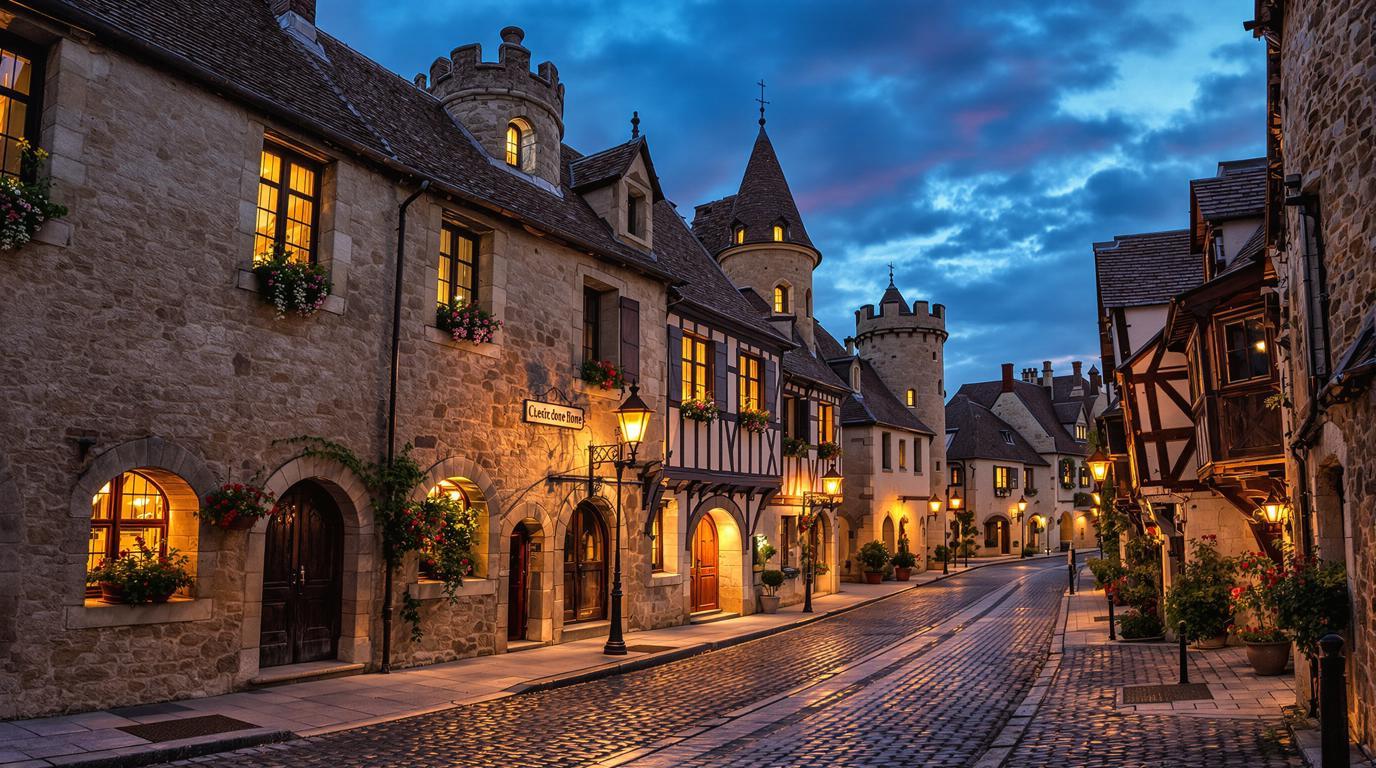Stepping into Mennetou-sur-Cher feels like walking through a portal to medieval France. This perfectly preserved village, encircled by 13th-century ramparts and defensive towers, offers something increasingly rare in our modern world: an authentic glimpse into the past that hasn’t been overly commercialized for tourists.
A medieval time capsule hiding in plain sight
Unlike the tourist-packed streets of Mont Saint-Michel or Carcassonne, Mennetou-sur-Cher remains delightfully under the radar. The village’s three circular defensive towers and fully intact stone walls speak to a time when this was an important fortified settlement guarding the Cher River crossing.
“Our village has survived 800 years largely unchanged,” explains Marie Clement, a local guide who leads the popular torchlight tours. “When visitors walk our cobblestone streets, they’re touching the same stones medieval merchants once traveled upon.”
The torchlight experience that transforms the village
For the most magical experience in Mennetou-sur-Cher, visit between July and August when evening torchlight tours illuminate the narrow streets and stone facades. As the sun sets, the medieval atmosphere intensifies, shadows dancing across ancient walls as guides share tales of knights, merchants, and local legends.
At just €10 for adults and €7 for children, this immersive historical experience rivals far more expensive attractions. The limited tourist numbers mean you’ll never battle crowds for photos or views.
Architectural treasures worth the journey
The village’s Église Saint-Urbain showcases remarkable Angevin Gothic architecture spanning from the 11th to 16th centuries. Its square choir represents a rare architectural feature that draws history enthusiasts from across Europe.
For travelers who’ve explored the golden temples of Japan’s ancient imperial capitals, Mennetou-sur-Cher offers a fascinating European counterpoint in architectural preservation.
La Maison des Artisans: Where medieval crafts live on
At the village craft center, local artisans demonstrate traditional skills that have been passed down through generations. The authenticity of these workshops makes them far more engaging than the commercial craft centers found in more touristy villages like certain Provençal destinations.
“We don’t just preserve buildings here, we keep traditions alive through our hands,” says Jean Moreau, a woodcarver whose workshop occupies a 15th-century building near the town gate.
Practical travel details you’ll appreciate
Mennetou-sur-Cher sits approximately two hours from Paris and one hour from Tours or Orléans, making it perfect for day trips. However, its quiet evenings deserve at least an overnight stay. The nearest train stations at Theillay and Villefranche-sur-Cher are 8-10 km away, so having a car is highly recommended.
Unlike medieval Spanish cities with Templar connections, Mennetou-sur-Cher’s small size means everything is walkable once you arrive. The village’s compact nature rivals even Italy’s tiniest picturesque islands.
Photography opportunities that transport viewers
Photographers will find endless inspiration in Mennetou-sur-Cher’s medieval features. The soft morning light on ancient stone walls, flower-lined cobblestone alleys, and the dramatic evening shadows create images that seem plucked from a storybook rather than modern France.
“I’ve photographed hidden gems across Europe, but there’s something special about how the light plays across these medieval structures,” notes Claire Dubois, a travel photographer who spent three days capturing the village’s essence.
The perfect alternative to overcrowded European destinations
While tourists flood the streets of Europe’s most Instagram-famous neighborhoods, Mennetou-sur-Cher offers that increasingly rare travel experience: a place where history, beauty, and authenticity converge without the distraction of crowds or commercial tourism.
This medieval jewel along the Cher River proves that sometimes the most rewarding destinations aren’t the ones trending on social media, but rather the quiet survivors of history that allow us to step back in time while moving forward in our understanding of the past.
